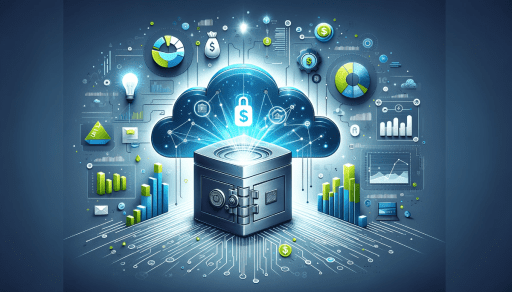Virtual Data Rooms (VDRs) are secure online repositories used to store and share sensitive information during business transactions. They have become an essential tool in today’s digital age, providing a secure and efficient way to manage and exchange confidential documents. VDRs are commonly used in mergers and acquisitions, due diligence processes, fundraising activities, and other business transactions where the protection of sensitive data is crucial.
The importance of VDRs in business transactions cannot be overstated. In the past, physical data rooms were used to store and share confidential documents. However, these rooms were expensive, time-consuming, and lacked the necessary security measures to protect sensitive information. With the advent of VDRs, businesses can now securely share documents with authorized parties from anywhere in the world, saving time and reducing costs.
There are several benefits to using VDRs. Firstly, they provide a high level of security and confidentiality for sensitive information. Secondly, they streamline the due diligence process by allowing multiple parties to access and review documents simultaneously. Thirdly, VDRs offer advanced features such as document organization, collaboration tools, and user access management, which enhance productivity and efficiency during business transactions.
Key Takeaways
- Virtual data rooms are designed to securely store and share sensitive information.
- Data security is a top priority in virtual data rooms, with features like encryption and two-factor authentication.
- User access management allows administrators to control who can view, edit, and download documents.
- Document organization is key to efficient navigation, with features like search and tagging.
- Collaboration tools like Q&A and document commenting streamline communication and feedback.
Data Security: Ensuring Confidentiality and Protection of Information
One of the primary concerns when using VDRs is data security. Businesses need assurance that their confidential information is protected from unauthorized access or data breaches. Fortunately, VDRs employ various security measures to ensure the confidentiality and protection of information.
Encryption is a fundamental security feature in VDRs. It involves converting data into an unreadable format that can only be decrypted with a specific key. This ensures that even if the data is intercepted during transmission or storage, it remains secure and inaccessible to unauthorized individuals.
Two-factor authentication adds an extra layer of security by requiring users to provide two forms of identification before accessing the VDR. This typically involves a combination of something the user knows (such as a password) and something the user has (such as a unique code sent to their mobile device). Two-factor authentication significantly reduces the risk of unauthorized access to the VDR.
Watermarking and access controls are additional security features that can be found in VDRs. Watermarking involves adding a visible or invisible mark to documents, making it easier to track and identify unauthorized copies. Access controls allow administrators to define who can access specific documents or folders, ensuring that only authorized individuals can view or edit sensitive information.
Regular security audits are also conducted by VDR providers to identify and address any vulnerabilities in their systems. These audits help ensure that the VDR remains secure and up-to-date with the latest security standards and best practices.
User Access Management: Controlling Access to Sensitive Data
Controlling access to sensitive data is crucial in VDRs. Businesses need to have granular control over who can access, view, edit, or download specific documents or folders. User access management features in VDRs provide the necessary tools to control and monitor user access.
User permissions and roles allow administrators to assign specific roles and permissions to users within the VDR. For example, an administrator can assign a user the role of “viewer” which only allows them to view documents but not make any changes. This ensures that users only have access to the information they need for their specific role or task.
Granular access controls further enhance user access management by allowing administrators to define access permissions at a more detailed level. For example, an administrator can specify that a user can only view certain documents within a folder, but not others. This level of control ensures that sensitive information is only accessible to authorized individuals.
Activity monitoring and reporting features provide administrators with real-time visibility into user activity within the VDR. This includes tracking document views, downloads, edits, and other actions performed by users. This helps identify any suspicious or unauthorized activity and allows administrators to take appropriate action.
Revoking access and deactivating users is another important aspect of user access management. In the event that a user’s access needs to be revoked, administrators can easily disable their account or remove their access permissions. This ensures that former employees or external parties no longer have access to sensitive information.
Document Organization: Structuring Data for Efficient Navigation
Efficient document organization is essential in VDRs to ensure that users can easily navigate and locate the information they need. VDRs offer various features to help structure and organize data effectively.
Folder and file structure allows users to create a hierarchical organization of documents and folders within the VDR. This makes it easy to group related documents together and navigate through the information in a logical manner.
Search and filter capabilities enable users to quickly search for specific documents or filter documents based on specific criteria. This saves time and improves productivity by allowing users to find the information they need without having to manually browse through folders.
Version control and audit trails are important features in VDRs, especially during collaborative processes where multiple versions of a document may exist. Version control ensures that users are always working with the latest version of a document, reducing the risk of confusion or errors. Audit trails track all changes made to a document, including who made the changes and when. This provides transparency and accountability during collaborative processes.
Customizable indexing and tagging allow users to add metadata or tags to documents, making it easier to categorize and search for specific documents. This feature is particularly useful when dealing with large volumes of documents or when organizing documents based on specific criteria.
Collaboration: Streamlining Communication and Feedback
Collaboration is a key aspect of business transactions, and VDRs offer several features to streamline communication and feedback among users.
Q&A and discussion forums provide a platform for users to ask questions, seek clarification, or engage in discussions related to specific documents or topics. This helps facilitate communication and ensures that all parties have a clear understanding of the information being shared.
Real-time notifications and alerts keep users informed about any updates or changes made to documents within the VDR. This ensures that users are always up-to-date with the latest information and can take immediate action if necessary.
User feedback and surveys allow administrators to gather feedback from users regarding their experience with the VDR. This feedback can be used to improve the usability and functionality of the VDR, ensuring that it meets the needs of its users.
Integration with other collaboration tools is another valuable feature offered by VDRs. Integration with tools such as project management software, communication platforms, or document editing tools allows users to seamlessly collaborate and share information across different platforms.
Technical Support: Resolving Technical Issues and Concerns
Technical support is crucial when using VDRs, as users may encounter technical issues or have questions regarding the functionality of the platform. VDR providers offer various forms of technical support to assist users.
24/7 customer support ensures that users can reach out for assistance at any time, regardless of their time zone or location. This provides peace of mind knowing that help is always available when needed.
Dedicated account managers are assigned to each customer to provide personalized support and assistance. Account managers are familiar with the specific needs and requirements of their customers and can provide tailored solutions or recommendations.
Onboarding and implementation assistance is provided by VDR providers to help users get started with the platform. This includes setting up user accounts, configuring permissions, and providing training on how to use the VDR effectively.
Integration and API support is offered by VDR providers to assist users in integrating the VDR with other systems or platforms. This ensures that users can seamlessly transfer data between different applications or automate certain processes.
User Training: Providing Adequate Training and Support for Users
Adequate user training is essential to ensure that users can effectively use the VDR and take full advantage of its features. VDR providers offer various forms of user training and support to help users get up to speed.
User guides and tutorials are typically provided by VDR providers to help users understand the basic functionality of the platform. These guides provide step-by-step instructions on how to perform common tasks within the VDR.
Webinars and training sessions are conducted by VDR providers to provide more in-depth training on specific features or functionalities. These sessions allow users to ask questions and receive real-time assistance from experts.
Knowledge base and FAQs are resources provided by VDR providers that contain a wealth of information on how to use the platform effectively. Users can search for specific topics or browse through the knowledge base to find answers to their questions.
Ongoing support and assistance are provided by VDR providers to ensure that users have access to help whenever they need it. This can include email or phone support, live chat, or a dedicated support portal where users can submit their questions or issues.
Cost Management: Optimizing Costs and Reducing Overhead
Cost management is an important consideration when choosing a VDR provider. Businesses need to ensure that they are getting the best value for their investment while keeping costs under control.
Flexible pricing plans are offered by VDR providers to accommodate different budgets and needs. This allows businesses to choose a plan that aligns with their specific requirements without paying for unnecessary features or capacity.
Pay-as-you-go and subscription models are common pricing models offered by VDR providers. Pay-as-you-go models allow businesses to pay only for the storage or usage they require, while subscription models provide a fixed monthly or annual fee for unlimited usage within certain limits.
Customizable features and add-ons allow businesses to tailor the VDR to their specific needs. This ensures that businesses are not paying for features they do not require, while still having the flexibility to add additional functionality as needed.
Transparent billing and invoicing are important aspects of cost management. VDR providers should provide clear and detailed invoices that outline the usage and costs associated with the VDR. This allows businesses to easily track and manage their expenses.
Compliance: Meeting Regulatory and Legal Requirements
Compliance with regulatory and legal requirements is crucial when using VDRs, especially when dealing with sensitive or confidential information. VDR providers offer various features and certifications to ensure compliance.
GDPR, HIPAA, and SOC 2 compliance are certifications that demonstrate a VDR provider’s commitment to data protection and security. These certifications ensure that the VDR meets the highest standards of data privacy and security, providing businesses with peace of mind.
Data retention and destruction policies are implemented by VDR providers to ensure that data is stored for the required period and securely destroyed when no longer needed. These policies help businesses comply with legal requirements regarding data retention and disposal.
Audit and compliance reports provide businesses with detailed information on the security measures and controls implemented by the VDR provider. These reports can be used to demonstrate compliance with regulatory or legal requirements during audits or due diligence processes.
Legal and regulatory expertise is offered by some VDR providers to assist businesses in navigating complex legal or regulatory requirements. This can include providing guidance on data protection laws, industry-specific regulations, or international data transfer regulations.
Vendor Selection: Choosing the Right Virtual Data Room Provider
Choosing the right VDR provider is crucial to ensure that businesses have access to a secure, reliable, and user-friendly platform. When selecting a VDR provider, businesses should consider several factors.
Evaluating features and functionality is important to ensure that the VDR meets the specific needs of the business. Businesses should assess whether the VDR offers the necessary security features, collaboration tools, document organization capabilities, and user access management features required for their specific use case.
Assessing security and compliance is crucial to ensure that the VDR provider meets the necessary security standards and certifications. Businesses should review the provider’s security measures, certifications, and data protection policies to ensure that they align with their own security requirements.
Reviewing customer support and training is important to ensure that businesses have access to adequate support and training when needed. Businesses should assess the availability of customer support, the quality of training resources, and the responsiveness of the support team.
Comparing pricing and value propositions is essential to ensure that businesses are getting the best value for their investment. Businesses should compare pricing plans, features, and add-ons offered by different VDR providers to determine which provider offers the best combination of features and affordability.
Conclusion: Summarizing the Benefits of Virtual Data Rooms and Encouraging Adoption
Virtual Data Rooms have revolutionized the way businesses manage and exchange sensitive information during business transactions. They provide a secure, efficient, and user-friendly platform for storing, sharing, and collaborating on confidential documents. The benefits of using VDRs are numerous, including enhanced data security, improved collaboration, streamlined document organization, and cost optimization.
Businesses should carefully evaluate their needs and requirements when selecting a VDR provider. Factors such as data security, user access management, document organization capabilities, collaboration tools, technical support, user training, cost management, compliance, and vendor selection should all be considered. By choosing the right VDR provider, businesses can ensure that they have a reliable and secure platform to manage their sensitive information during business transactions.
If you’re interested in learning more about the infrastructure behind cryptocurrency, you should check out this fascinating article on the rise of Bitcoin mining data centers. It delves into the backbone of cryptocurrency infrastructure and unveils the inner workings of these data centers. Understanding the technology and processes behind Bitcoin mining can provide valuable insights into the challenges faced when using virtual data rooms.
FAQs
What is a virtual data room?
A virtual data room is an online platform used for secure storage and sharing of confidential documents and information during business transactions.
What are the common challenges when using virtual data rooms?
Some common challenges when using virtual data rooms include difficulty in managing access permissions, ensuring data security, dealing with technical issues, and managing large volumes of data.
How can access permissions be managed effectively in virtual data rooms?
Access permissions can be managed effectively in virtual data rooms by setting up user roles and permissions, using two-factor authentication, and monitoring user activity.
What measures can be taken to ensure data security in virtual data rooms?
To ensure data security in virtual data rooms, measures such as encryption, firewalls, and regular security audits can be implemented. It is also important to choose a reputable virtual data room provider.
What technical issues can arise when using virtual data rooms?
Technical issues that can arise when using virtual data rooms include slow loading times, compatibility issues with different devices and browsers, and system crashes. It is important to choose a virtual data room provider with reliable technical support.
How can large volumes of data be managed effectively in virtual data rooms?
Large volumes of data can be managed effectively in virtual data rooms by using features such as indexing, search functions, and bulk uploading. It is also important to organize data in a logical and structured manner.







